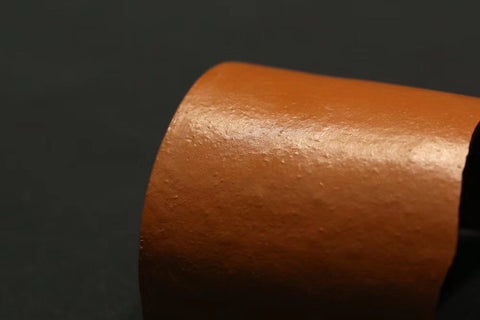Why age Zhuni Clay?

(Originally published March 30, 2019)
A block of zhuni from Huang Long Mountain 黄龙山 sits ageing at the studio of Chen Chunhong and Lin Hanpeng. Curious to see whether or not the clay had aged long enough, Lin Hanpeng took a small amount to shape into a cup and fire this week.
Although the fired Huang Long Shan zhuni looks fine on the surface, something isn’t right. The young clay lacks the desired plasticity needed to prevent the clay from cracking and breaking. Like other clays, ageing Yixing clay (zisha) increases its plasticity. "You can see from the texture inside the clay, it is still too sandy. It is not sticky enough yet," Lin explains. “Some studios will increase the viscosity and plasticity of young zhuni clay by adding some pre-fired zhuni ore to unfired zhuni ore, mixing the two together and processing it this way.” Although the finished product is still technically zhuni, “doing this changes the original character of the clay, degrading its quality. There isn't a lot of original ore Huang Long Mountain zhuni in the market. If you add cooked ore to the raw ore, you lose the flavour of the original zhuni."
Part of being a competent Yixing potter is not only knowing where to acquire clay, but how to process it properly for the best result. This batch of zhuni will sit for another year or two before Lin tries it again.



